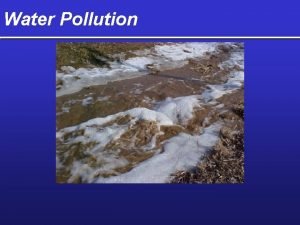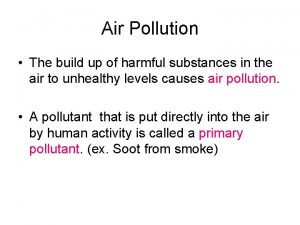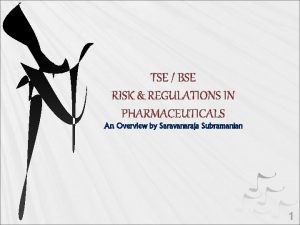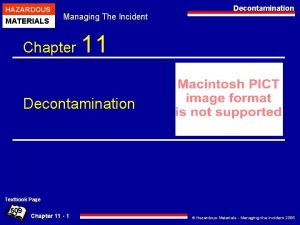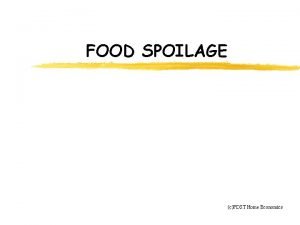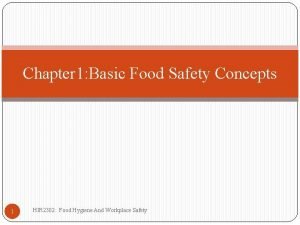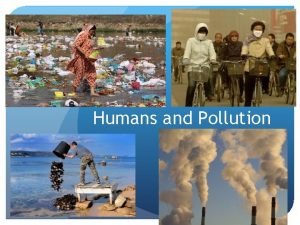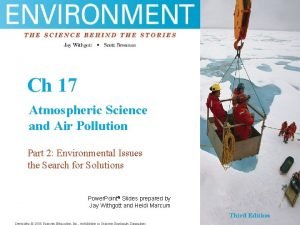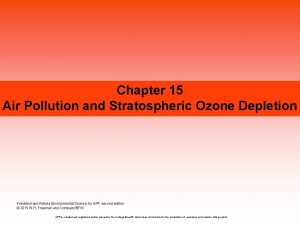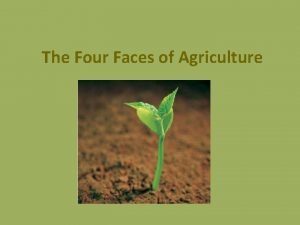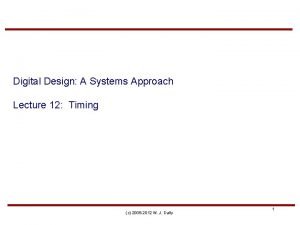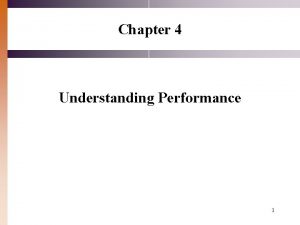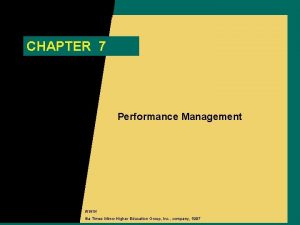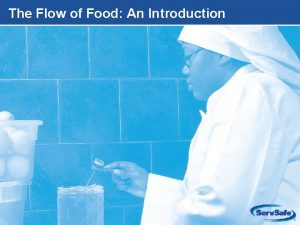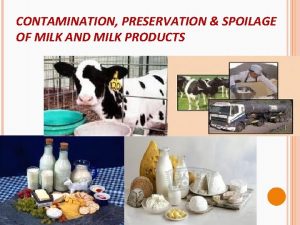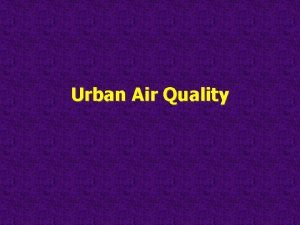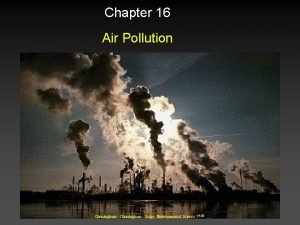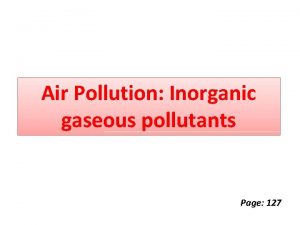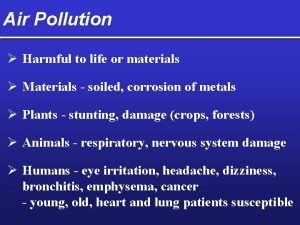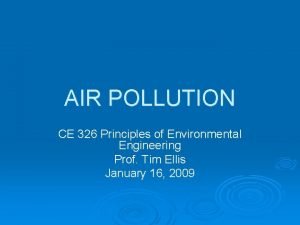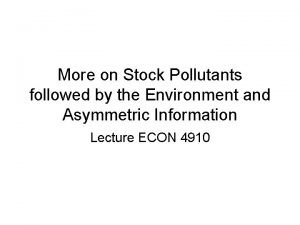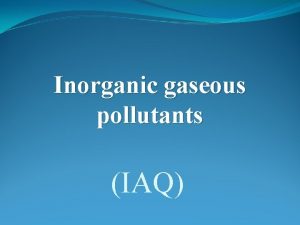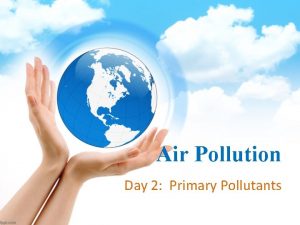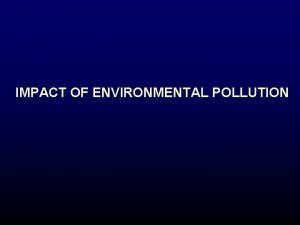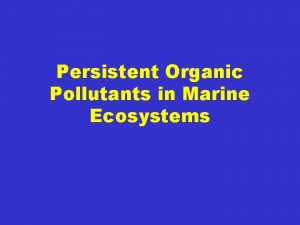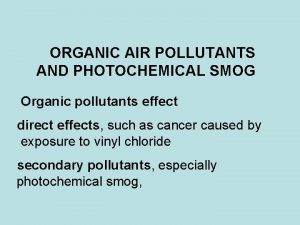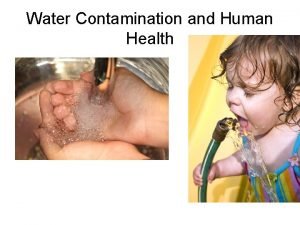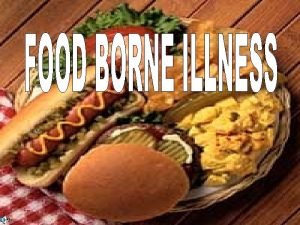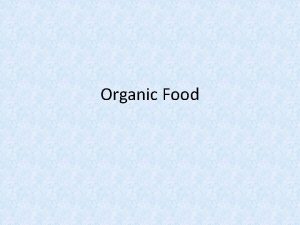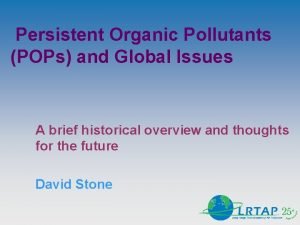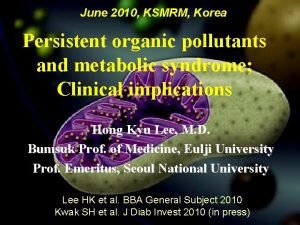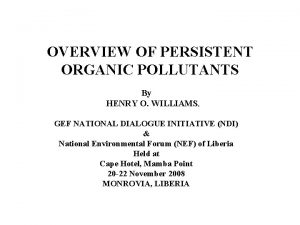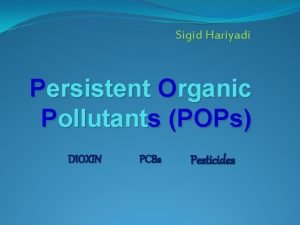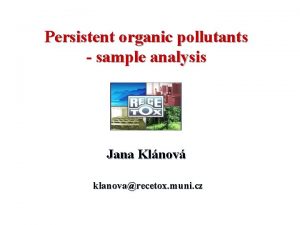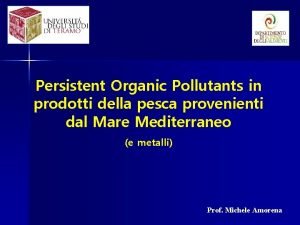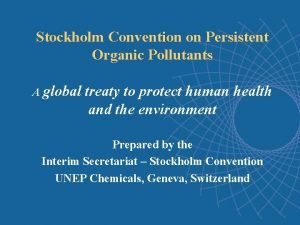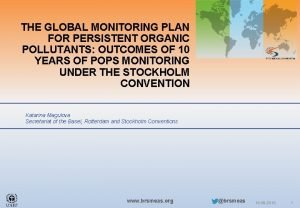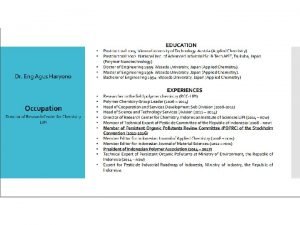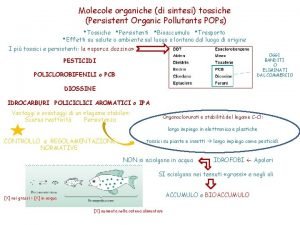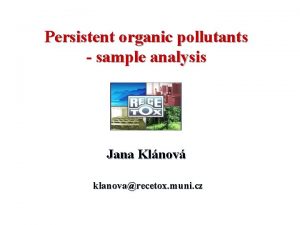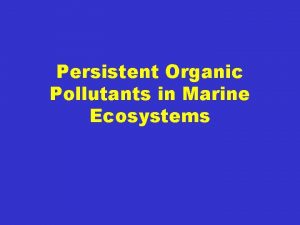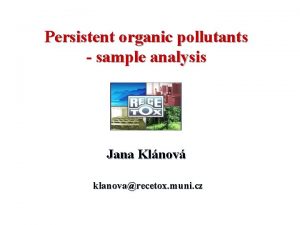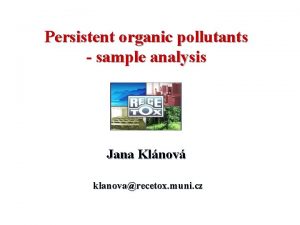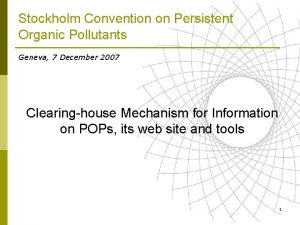Food Contamination and Safety Concepts Persistent Organic Pollutants































- Slides: 31

Food Contamination and Safety • Concepts • Persistent Organic Pollutants (POPs) – E. g. PCBs • Heavy Metals – E. g. Mercury

Food Contamination and Safety • Northern plants and animals are exposed to contaminants that accumulate in the North • Pollutants move from soil and water into plants, and from there into animals • The carnivore diet of humans in the Arctic involves the consumption of species high up in the food chain This results in a higher chance of poisoning • Feeding on caribou vs. marine mammals exposes humans to different levels of contaminants

Concepts Bioaccumulation • The process by which a contaminant accumulates in the tissues of an individual organism • E. g. certain chemicals in food eaten by a fish tend to accumulate in its liver and other tissues – the chemicals are taken in faster than the individual can get rid of them – PCBs are stored in fat – Cadmium is stored in the kidneys – Mercury is stored in the liver

Bioaccumulation

Concepts Biomagnification • Increase in concentration of certain stable chemicals (for example, heavy metals or fatsoluble pesticides) in successively higher trophic levels of a food chain or web. • E. g. metals such as mercury, persistent organic pollutants (POPs) such as PCBs, pesticides, dioxins • Note: Not all contaminants biomagnify

Biomagnification

An extra link, on top of an already long food chain

Contamination: Persistent Organic Pollutants (POPs) • Also called organochlorines • An organic compound containing chlorine • E. g. polychlorinated biphenyls (PCBs); common pesticides, such as DDT or Dioxin

Persistent Organic Pollutants (POPs) • Highly toxic chemicals • Estimated that 400 million tons are produced annually worldwide • The “dirty dozen” aldrin, chlordane, DDT, dieldrin, dioxins, furans, endrin, HCB, heptachlor, mirex, PCBs, toxaphene • Stored in fat and are persistent

Organochlorines

Example: Polychlorinated Biphenyls (PCBs) • No longer produced in North America, but are still produced in some developing countries • Were commonly used as lubricants in hydraulic fluid, transmission oil, and in electrical transformers • Considered a POP they stay in the environment for a long time and travel long distances

Polychlorinated Biphenyls (PCBs) • PCBs biomagnify • At low level in food can affect the reproductive system and thyroid, may damage the immune and nervous system • Prenatal infants exposed to PCBs tend to have a higher incidence of upper respiratory-tract infections • Suspected to cause liver, skin, and intestinal cancers

Levels of POPs in blood plasma

Average intake of POPs/day

Contamination: Heavy Metals • Minerals that are naturally present in rocks and soils in all parts of the world, including the bed rock and unconsolidated material of the Canadian Arctic • E. g. mercury, cadmium, lead • Cadmium and mercury are released as a byproduct of mining and smelting primary longrange transport is through the atmosphere • Significant quantities of mercury are also released as a result of the erosive and chemical actions that take place in reservoirs built to store water for large hydro-electric projects • Metal levels are highest in people who eat large amounts of organ meat

Example: Mercury • Mercury is a natural element that occurs in terrestrial and aquatic ecosystems in the Arctic • Atmospherically deposited mercury is emitted from sources such as coal-fired electric utilities and waste incinerators in the south • Global levels of atmospheric mercury are increasing each year

Mercury • Major source of mercury is through meat, in the form of methyl mercury • Highest in people who eat a lot of marine food • Methyl mercury is easily taken up through the intestinal wall • Major health concern is damage to the brain and nervous system, may also affect the immune system • Methyl mercury easily passes through the placenta and can affect the fetus may cause neurological damage

Methyl Mercury

Mercury in Maternal Blood Region West. NWT N-central NWT Nunavik (N. Québec) NW Greenland N Sweden N Norway Iceland Nikel, Russia Micro-grams mercury/liter whole blood 1. 7 3. 5 13. 7 19. 8 1. 6 2. 3 2. 9 2. 3

Time trend of mercury concentration in blood

Case Study: James Bay Project • The construction of a series of hydroelectric power stations on the La Grande River in northwestern Québec • One of the largest hydroelectric systems in the world • Installed generating capacity of 16, 000 megawatts 3 x more power than the power station at Niagara Falls!



James Bay Project • 1971: plans unveiled for the construction of several large hydroelectric power stations on the rivers flowing into James Bay • Environmental assessments were not required under Québec law at the time • Strong opposition to the project by the Crees of James Bay, the Inuit to the north, and several environmental groups – They believed the government was violating treaties and committing unlawful expropriation and destruction of traditional hunting and trapping lands – The Cree and Inuit were not informed of the project until after the construction of access roads had begun

James Bay Project • 1975: the governments of Canada and Québec signed the James Bay and Northern Québec Agreement with the Cree and Inuit – Granted exclusive hunting and fishing rights to ~170, 000 km 2 of territory and 250 million dollars in financial compensation in return for the right to develop the project

James Bay Project: Environmental Impact • Caniapiscau and Eastmain rivers were diverted into La Grande River watershed • 11, 000 km 2 of Boreal forest was submerged • Flow of La Grande River doubled

La Grande Rivière

James Bay Project: Mercury • Before the project, local levels of mercury in lakes and rivers were high due to atmospheric pollution and the natural geology of the region • When a reservoir is created the existing vegetation and soil is submerged, causing it to decompose and deplete oxygen from the water supply • Mercury that exists in a harmless inorganic form in the soil may be transformed by bacteria into methyl mercury once the soil is flooded • The toxic methyl mercury is lethal to the fish and can be absorbed and passed up the food chain

James Bay Project: Mercury • Mercury concentrations in benthic insects, fish (which feed on benthic insects), and nestling tree swallows (which feed on fish) increased after flooding • Many native people in villages where fish are a main component of the diet have shown symptoms of mercury poisoning • Mercury concentrations in fishery resources of reservoirs may remain substantially elevated for decades after flooding

Mercury in fish in La Grande 2 reservoir

Mercury in fish in La Grande 2 reservoir
 Planting more trees
Planting more trees Primary pollutants and secondary pollutants
Primary pollutants and secondary pollutants Difference between primary and secondary pollutants
Difference between primary and secondary pollutants Tse/bse free meaning
Tse/bse free meaning Contamination vs cross contamination
Contamination vs cross contamination Persistent vs non persistent http
Persistent vs non persistent http Food contamination monitoring system
Food contamination monitoring system Food contamination in home economics
Food contamination in home economics Four f's of food contamination
Four f's of food contamination Food safety concepts
Food safety concepts Primary pollutants
Primary pollutants Ozone layer levels
Ozone layer levels Primary and secondary pollutants difference
Primary and secondary pollutants difference Food safety food security
Food safety food security Pros and cons of organic food
Pros and cons of organic food Propagation delay
Propagation delay Criterion deficiency and contamination example
Criterion deficiency and contamination example Contamination and deficiency of a job performance measure
Contamination and deficiency of a job performance measure Physical and procedural barriers of cross contamination
Physical and procedural barriers of cross contamination Contamination of milk and milk products
Contamination of milk and milk products Criterion deficiency and contamination
Criterion deficiency and contamination Unit 2 food food food
Unit 2 food food food Food chain sequence
Food chain sequence Secondary pollutants examples
Secondary pollutants examples Primary vs secondary pollutants
Primary vs secondary pollutants Inorganic gaseous pollutants of air
Inorganic gaseous pollutants of air What is secondary pollutant
What is secondary pollutant Primary vs secondary pollutants
Primary vs secondary pollutants Stock pollutants
Stock pollutants Inorganic gases
Inorganic gases What are the secondary air pollutants
What are the secondary air pollutants Is environmental pollution
Is environmental pollution
